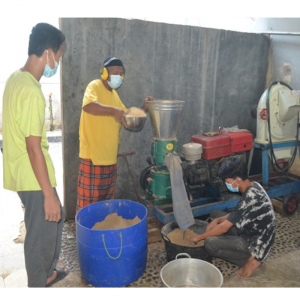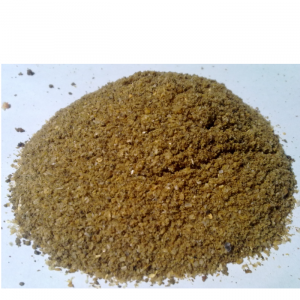
Artemia Decapsulation: Transitioning from Tradition
| Fri, 16 Apr 2021 - 12:22
Artemia is the most widely used live larval feed in fish and shrimp hatcheries. As prey they have a suitable size, are highly nutritious and stimulate the feeding response of marine fish and shrimp. Besides, Artemia nauplii can be enriched with nutrients to improve their nutritional profile. Before hatching, Artemia are, however, enclosed in a rigid shell (chorion).
On the one hand, this means that Artemia cysts can be stored indefinitely and hatched into live nauplii on demand. On the other hand, the chorion of the cyst is non-digestible and must be removed from live nauplii before offering the live prey to larval aquaculture species. Removal is a challenge even to the modern aquaculture sector and current practices can compromise human welfare and raise environmental concerns.
Also read: INVE Aquaculture Uncovers Artemia in A Brand New Knowledge Hub
Acommonly used approach to decapsulate Artemia cysts is a chemical process using hypochlorite. This method frees the embryos to allow them to develop and hatch into free swimming nauplii. However, this process carries many risks, not only for the Artemia but also for the operators and the environment. The chemical oxidation process catalysed by hypochlorite and the heat produced in this exothermic reaction can damage the embryos, requiring a well-managed, closely timed and complex decapsulation protocol to avoid significant losses or minimise reduced hatchability of Artemia embryos.
The complexity of decapsulation calls for highly skilled and trained operators, making it a costly process. Moreover, these workers are at risk of exposing themselves to hazardous chemicals and inhaling the toxic gases and fumes produced in the reaction. The waste products, such as adsorbable organic halogen compounds (AOX), are harmful to the environment and difficult to degrade; some are toxic to humans and other organisms through which they can accumulate in the food chain.
These concerns regarding the disposal of the by-products make it unsustainable and costly to carry decapsulation at a large-scale.
Also read: Green Algae - Substitute Partial Pellet Feed for Tilapia
A more sustainable method
It is therefore essential to switch to more efficient and sustainable methods to produce live Artemia nauplii and promote further growth of the aquaculture industry. Answering to these needs INVE (Benchmark Advanced Nutrition) developed the SEP-Art technology. This technology separates nauplii from their cysts using magnetism.
SEP-Art cysts are coated with a nontoxic layer of magnetic material that does not affect the overall hatching characteristics of the cysts. The SEP-Art separation tool uses magnets that solely attract the cysts and empty shells, freeing the Artemia nauplii during the process. Once the cysts attach to the magnets, they can be removed easily from the Artemia nauplii suspension.
Also read: The Grain Gain: Could Barley Protein Revolutionise The Aquafeed Sector?
This allows the harvest of more and better quality Artemia nauplii in less time. As opposed to the traditional methods, SEP-Art does not compromise the vitality of the nauplii as it does not employ physical force or a chemical reaction. Furthermore, it maximises the recovery of the hatching output and speeds up the harvest and collection of the nauplii, making it more efficient.
Compared to decapsulation, SEP-Art tools are intuitive and easy to use, and, hence, accessible to untrained workers. The process does not produce chemical waste, making it more sustainable to the environment even at large scale. Overall, a more efficient approach that enables farmers to increase the quality and survival of the harvested nauplii and support the healthy growth of fish and crustaceans.
Source: Aquaculture Acia Pacific






















